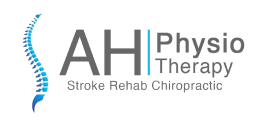Breaking a bone is painful episode with a long road to recovery, bone fractures are often treated conservatively or surgically. Patient is often in cast for 3-4 weeks. While the fracture heals itself with time, what remains after the cast removal is Post fracture stiffness. Since the joint is fixed in a position for 21 or more days , it starts to build adhesions inside the joint capsule leading to joint stiffness, limiting mobility and causing pain on movement. This often leads to delay in returning to activities of daily living, depending on the joint involved. This is where physiotherapy plays a crucial role in regaining mobility, strength, flexibility and function.
Why does Post fracture Stiffness happen?
After a fracture, the affected limb is immobilized in a cast, splint or brace for few weeks. While this is necessary to protect the bone and allow for the fracture site to heal, it also lead to:
Joint Stiffness: Due to prolonged lack of movement
Muscle weakness: Due to disuse atrophy
Scar tissue formation: Due to healing process at the site of injury which leads to restriction of mobility
Reduced Circulation: Poor mobility causes less blood circulation, leading to slow healing.
Even after the cast is removed, patients often complain of restriction in joint movements, making simple activities like bending the knee, lifting the arm or gripping objects difficult.
How Physiotherapy helps in Recovery?
Physiotherapy is an essential part of rehabilitation post fracture. It helps in:
- Restoring Joint mobility: Passive and active range of motion exercises help in restoring the movement in stiff joints. We use techniques like Hold Relax to inhibit tight tissue structures and gently loosen and stretch the area.
- Strengthening weak muscles: Therapeutic exercises help build strength in the muscles gradually which have weakened due to immobilization.
- Pain Management: Manual therapy, joint glides, ultrasound therapy and TENS can help reduce pain and inflammation. Heat therapy improves blood flow while cold therapy reduces swelling.
- Improving balance and coordination: Proprioceptive exercises help retrain body to sense balance , control falls specially after leg fractures.
- Preventing long term complications: Early Physiotherapy can prevent chronic pain, deformities and reduced mobility by focusing on complete recovery.
Why you shouldn’t ignore Post fracture stiffness?
Many people assume that once fracture has healed, the stiffness will go away on its own. Sometimes even Orthopaedicians also forget to emphasize on the importance of physiotherapy and fail to educate patients about long term complications in case post fracture stiffness physiotherapy is neglected. Ideally a patient should be referred to physiotherapy post cast removal for faster recovery and regain of function. As Neglecting rehabilitation can lead to permanent movement restrictions, joint deformities and chronic pain. A well structured Physiotherapy program ensures you regain full function, whether its bending your knee, elbow, gripping objects after wrist fracture or walking confidently post ankle fractures. Remember fracture healing is not just about bone, its about restoring movement and strength.
Start your physiotherapy early after cast removal to regain function at the earliest. Physiotherapy is not just about exercises, its about expert technique, guided movement to gently gain range and personalized care to restore mobility after a fracture. If You or your loved ones are struggling with post fracture stiffness, consult our team of expert physiotherapists to make all the difference in your recovery journey.

